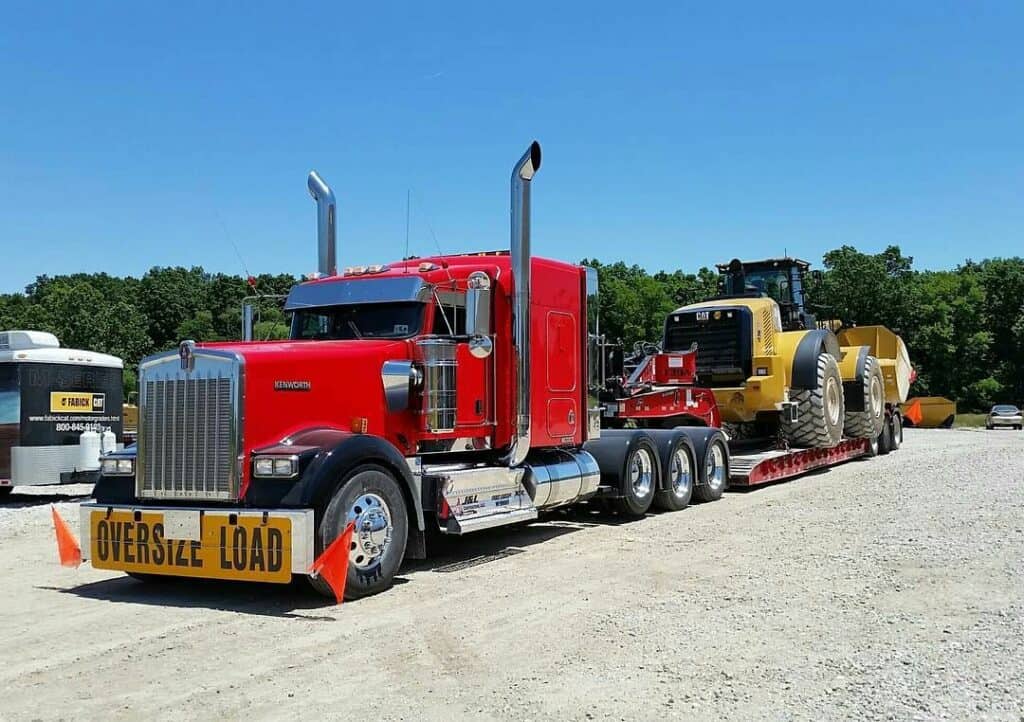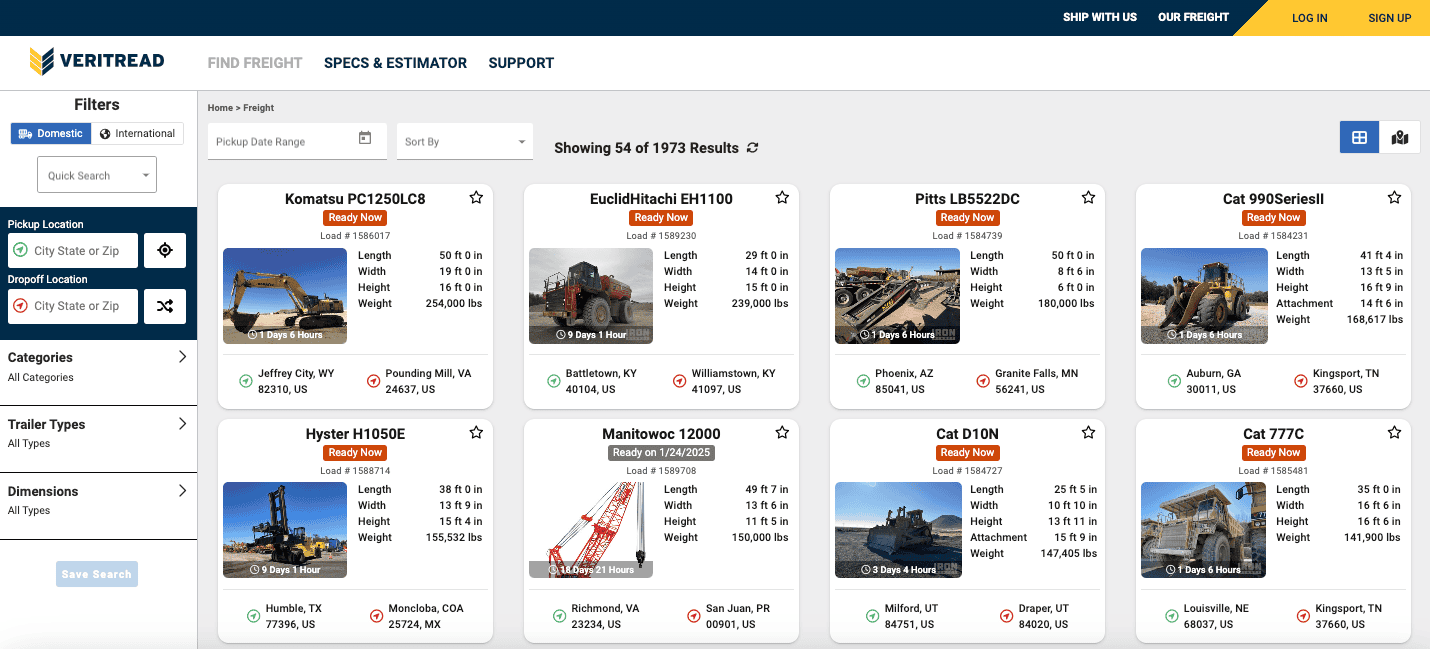All You Need to Know About Flatbed Trailer Dimensions

When it comes to hauling large and unconventional loads, flatbed trailers are the go-to choice for many trucking professionals. With their open platform and robust construction, flatbed trailers offer unparalleled versatility in transporting a wide range of goods. However, understanding the flatbed trailer dimensions and specifications is crucial to ensure efficient and safe transportation. In this comprehensive guide, we will delve into the various aspects of flatbed trailer dimensions, answering common questions and shedding light on their capabilities. So, fasten your seat belts and get ready to dive into the world of flatbed trailer dimensions!
Outline:
- What Size is a Standard Flatbed?
- What is the Most Common Type of Flatbed Trailer?
- How Much Does a Flatbed Trailer Weigh?
- How High is a Flatbed Trailer from the Ground?
- How Long Do Flatbed Trailers Last?
- What is Flatbed Load to Truck Ratio?
- What Can be shipped on a Flatbed Trailer?
- How Much Weight Can a Flatbed Carry?
What Size is a Standard Flatbed?
Flatbed trailers come in various sizes, but there is a standard size that is widely used across the industry. Typically, a standard flatbed trailer measures 48 feet in length. However, it’s essential to note that variations do exist, such as 45-foot and 53-foot trailers. Understanding the standard size helps ensure proper planning and compatibility with loading docks and shipping facilities.
What is the Most Common Type of Flatbed?
When it comes to flatbed trailers, the most common type is the “conventional flatbed” or “straight-frame” trailer. This type features a flat, rectangular bed without any drop in height or specialty configurations. This makes them versatile and can be used to transport a variety of goods, including construction materials, machinery, and agricultural products. Standard flatbed trailers are also relatively inexpensive, making them a popular choice for businesses and individuals.
How Much Does a Flatbed Trailer Weigh?
The weight of a flatbed trailer depends on its construction materials, design, and added features. On average, a standard flatbed trailer weighs between 6,000 to 12,000 pounds. Some trailers can weigh as much as 20,000 pounds or more. However, it’s crucial to consider the weight of the cargo to ensure compliance with legal weight limits and safe transportation. Overloading a trailer can be dangerous and can lead to accidents.
How High is a Flatbed Trailer from the Ground?
The height of a flatbed trailer from the ground can vary depending on the make, model, and size of the trailer. In general, a standard flatbed trailer is about 5 feet high from the ground. However, some trailers can be as high as 8 feet or more. It is important to factor in the height of the trailer when determining the maximum clearance. The maximum clearance is the maximum height that the trailer can safely pass under an object, such as an overpass or a bridge. If you are unsure about the maximum clearance of a flatbed trailer, it is always best to consult with the manufacturer or a freight specialist.
How Long Do Flatbed Trailers Last?
The lifespan of a flatbed trailer depends on various factors, including maintenance, usage patterns, and environmental conditions. On average, a well-maintained flatbed trailer can last from 10 to 25 years. However, some trailers may last longer, while others may need to be replaced sooner. Regular inspections, proper upkeep, and addressing any signs of wear or damage promptly can significantly extend the trailer’s lifespan.
What is Flatbed Load to Truck Ratio?
The flatbed load-to-truck ratio is a measure of the balance between supply and demand for flatbed transportation. It is calculated by dividing the number of loads posted on a load board by the number of trucks posted on the same load board. A high load-to-truck ratio indicates that there is more demand for flatbed transportation than there are trucks available, while a low load-to-truck ratio indicates that there are more trucks available than there is demand for flatbed transportation.
The flatbed load-to-truck ratio can vary depending on a number of factors, including the time of year, the economic climate, and the specific region of the country. In general, the load-to-truck ratio is higher during the peak shipping seasons, such as the summer and the holiday season. The load-to-truck ratio is also higher during economic recessions, as businesses tend to ship more goods during these times.
A high load-to-truck ratio can make it difficult to find a truck to transport a load. This can lead to higher rates for flatbed transportation. A low load-to-truck ratio, on the other hand, can make it difficult for trucks to find loads to haul. This can lead to lower rates for flatbed transportation.
What Can be shipped On a Flatbed Trailer?
Flatbed shipping is a popular option because of the versatility flatbed trailers allow. Flatbed trailer dimensions make it easy for hauling irregularly shaped cargo like pipe, steel, lumber, block, construction equipment or large vehicles which don’t fit into the traditional dry van trailer.
Flatbed trailers may include several types of trailers like: lowboys, RGN, step decks, stretch double drop decks, extendable, Conestoga, and side kit trailers among other types. These trailers, also known as open deck, allow you to load and unload from either the front or back of the trailer without having to go through any doors on the other end.
Flatbed trailer dimensions are important when moving open-deck freight. Weight, destination, time-frame, cost and extra specifications all play a factor into the cost of transporting your flatbed trailer. This is why it’s extremely important to accurately share your specification, expectations and needs with your transport provider.
- Max length: 48’ or 53’ (depending on trailer length)
- Max width: 8.5’
- Max height: 8.5’
How Much Weight Can a Flatbed Carry?
Flatbed trailers can haul a maximum weight of 48,000 pounds. However, tri-axle trailers can haul up to 65,000 pounds, making them ideal for heavy cargo. The U.S. Department of Transportation Federal Highway Administration, has the following mandated maximum weights for the National System of Interstate and Defense Highways:
- 80,000 pounds gross vehicle weight
- 20,000 pounds single axle weight
- 34,000 pounds tandem axle weight
The Federal Highway Administration looks to protect bridges by calculating the number and spacing of axles carrying the load weight. This is called a bridge formula and is applied to commercial vehicles to ensure compliance.
The specific formula from the Federal Highway Administration is as follows:
W=500(LN/N-1 + 12N + 36); where W=overall gross weight on any group of 2 or more consecutive axles to the nearest 500 pounds. L=distance in feet between the extreme of any group of 2 or more consecutive axles, and N=number of axles in the group under consideration
When it comes to hauling oversize loads, the federal government is not the one to issue permits to operators. Instead, this is handled on a state-by-state basis – check out Coast to Coast Trucking Permits extensive state-by-state list that helps to highlight the exceptions.
Let VeriTread help you!
VeriTread moves thousands of flatbed loads every year and can quickly generate a reliable estimate on the go. Our extensive specs and dimensions database of 60,000+ items, ensures you spend less time researching and more time putting your equipment to work. The VeriTread Shipper quote process is the simplest way to receive competitive quotes from vetted transport providers. Follow these easy steps and you will receive a quote in under one minute:
Select Ready To Ship from the Freight Options Page
Enter a Manufacturer & Model
Verify or Edit Your Machine Dimensions
Enter Pickup & Drop Off Locations
Your Quote is Ready!
We believe our suite of innovative decision tools empower our customers to make smarter and more informed transportation decisions, reducing overall uncertainty, and saving you time and money. If you have questions contact us at (800) 880-0468 or (863) 226-0903 and let our team of experts help you with your transport needs.
veritread products
Top Articles
Freight Types
recent posts

Basic Tips of Heavy Equipment Transport

Understanding Equipment Transport Services


